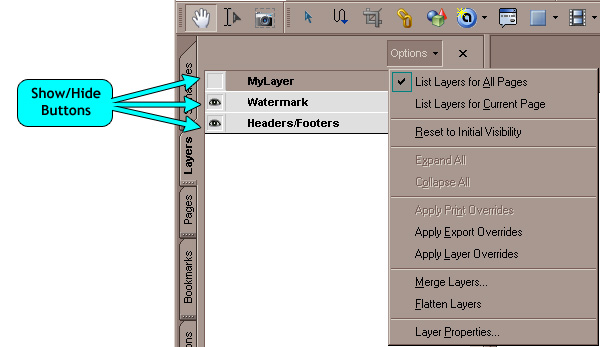Adobe Acrobat Javascript Date Calculation

These examples illustrate several ways to reference an object. When accessing a specific instance of an object, be aware of the occurrence number of the object where.
How to code Adobe Java. Script, how to code PDF Java. Script. Learn how to code Adobe Java. Script to create a custom dynamic stamp.
In Adobe Acrobat, how a form field behaves is determined by settings in the Properties dialog box for that individual field. You can set properties that apply. Collection of sample Acrobat JavaScriot snippets for processing PDF documents in Adobe Acrobat. Adobe® LiveCycle® Enterprise Suite 4 (ES4) extends business processes to your mobile workforce and customers, increasing productivity while broadening service. I'm looking for the easiest, cleanest way to add X month to a Javascript date. I'd rather not handle the rolling over of the year or have to write my own function.
So you’ve finally figured out how to create a custom dynamic stamp for Acrobat. Showdown In Little Tokyo 1991 Avi Download Software. Documentation on dynamic stamps is already hard enough to come by. There is a solution. The stamps are the pages in the Stamp File. Acrobat creates a new Stamp File when you create a new Stamp Category. Let me repeat that in a different way.

All the stamps in a Stamp Category are placed in the same Stamp File, Figure 1. Figure 1 — Creating a Category creates a new Stamp File. The trick to creating a dynamic stamp is to first locate the Stamp File that contains your custom stamp. Fortunately, all the Stamp Files are contained within two folders, a . Acrobat keeps its own built- in stamps in the . You can find the locations of these folders by executing the following lines of code in the Java. Script Console. app.
Path (. But remember, a Stamp File is a PDF, so you can open each one of the Stamp Files in the user stamp folder to find the stamp you want to make dynamic. Once you find the Stamp File, rename it so you'll know what it is the next time you need to make a dynamic stamp. Acrobat does not care about the name, you can make it anything you want. To make the stamp dynamic you add form fields to it. At least one of the added form fields must have a calculation script. This means the script is run when Acrobat first opens the Stamp File, when the stamp is displayed on the Stamp Menu, and when any stamp in the Stamp File is placed on a PDF.
None of the other document or field scripts are useful. You must use the Field Calculation Script, and only the Field Calculation Script.
This calculation script runs in the context of the Stamp File, i. Doc Object of the Stamp File. This issue seems impossible, but fortunately Acrobat Java.
Script provides us with a solution. For dynamic stamp scripts, the event. Doc Object for the PDF being stamped, event. Use the following code to get the file name for the PDF on which the stamp is being placed. File. Name. To write a value into the document’s metadata, use this code.
Date = util. printd(. For feature 2 we can use app.
But there is a problem. We want this popup to appear only when the user places the stamp on the PDF. But as discussed previously, the calculate script is called in several different situations. We can't have the app.
So, how does the stamp script know when our particular stamp is being placed on the document. Again, event. source comes to the rescue.
In this case, we use the event. Real and event. source. Name properties. The for. Real property is true when any stamp in the Stamp File is being placed on the document and false at all other times. This property narrows things down, but we need one more property to uniquely identify the situation when our particular stamp is being placed. The stamp. Name property identifies the stamp in current use. Both of these properties must be used together to qualify stamp code that performs any kind of blocking operation, such as displaying a popup dialog.
The Stamp Name. So what is the name of our stamp? If you look back at Figure 1, you might think that the name you entered into the . But this would be incorrect. The name you gave the stamp is just a label. Acrobat gives the stamp a unique internal name you don't see. This name is a string of very cryptic looking letters and numbers and it is always prefixed with a .
But how do you find it? There are several ways to get the real name of your stamp, but here is the easiest.
Place your stamp onto a PDF file. It doesn't matter which file, this is just a dummy placement so you can get some information. Maxidix Wifi Suite 13 5 28 Build 491 Final. You can delete it later. Select the stamp with the cursor.
Open the console window and run the following code (Figure 4)this. Annots. Of course you'll need to change the stamp name to match your stamp. Putting it all together. Let’s lay out the code our intrepid developer has created for his stamp. You heard that right. Stamps have not changed significantly in a very long time. The only reason the sample won't work in early versions is because of changes to the Java.
Script model, not stamps. And to make things even better, Reader XI will apply dynamic stamps to any PDF document, without any special Reader Rights enabling. If you don't know about Reader Rights, then don't worry about it.
The important bit is that you can use your dynamic Stamp Files with Adobe Reader XI to stamp any PDF file. To use these stamps, place the sample file linked above into one of Acrobat’s stamp folders.